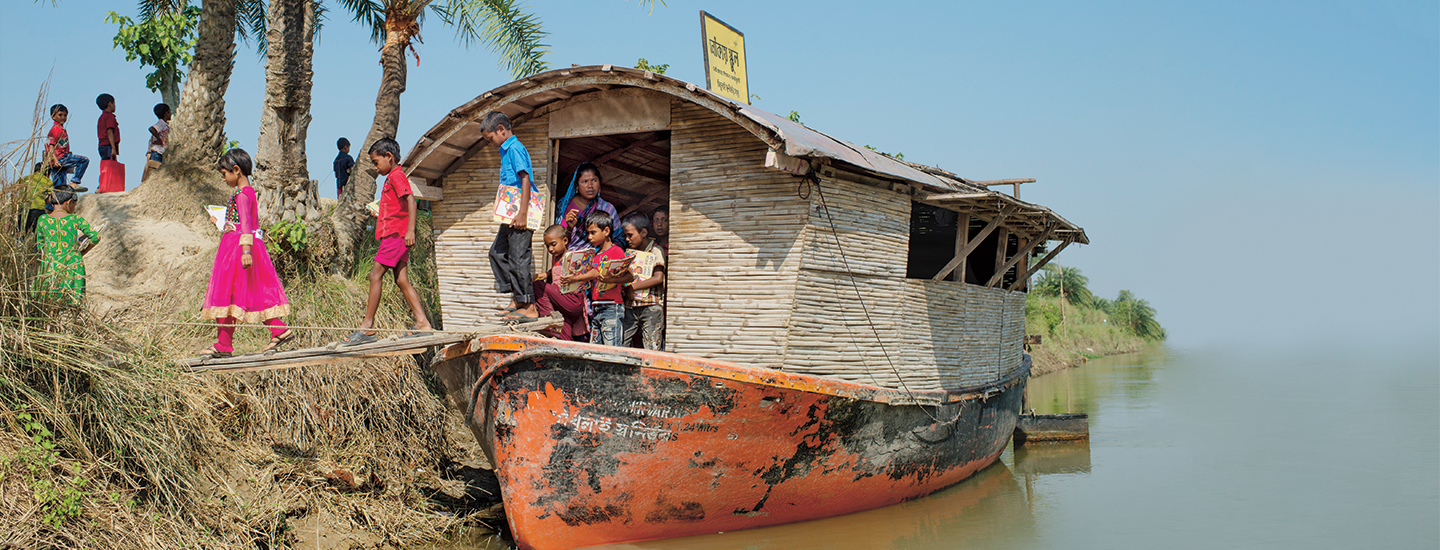From June to October, monsoons strike South Asia. The country of Bangladesh is pelted by heavy rain. The rains cause massive flooding, and many students can’t get to school. But some kids avoid this problem. How? Their schools are on boats that float around and pick them up!
Bangladesh is especially vulnerable to flooding because of its location. The country lies on a delta where the Ganges River splits into many branches. When it rains heavily, these small rivers overflow.
Monsoons strike South Asia from June to October. Heavy rain falls on the country of Bangladesh. The rains cause major flooding. Many students can’t get to school. But some kids avoid this problem. How? Their schools are on boats! The boats float around and pick kids up.
Bangladesh is very prone to flooding. That’s because of its location. The country lies on a delta. It’s where the Ganges River splits into many branches. These small rivers overflow when it rains heavily.

